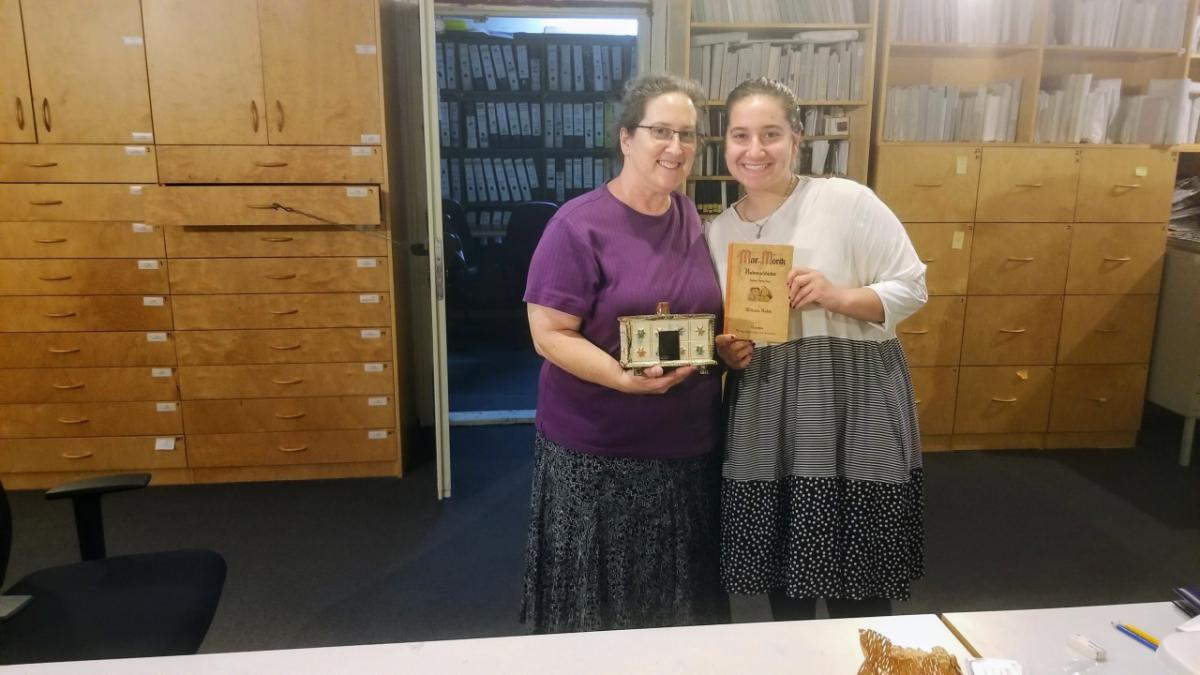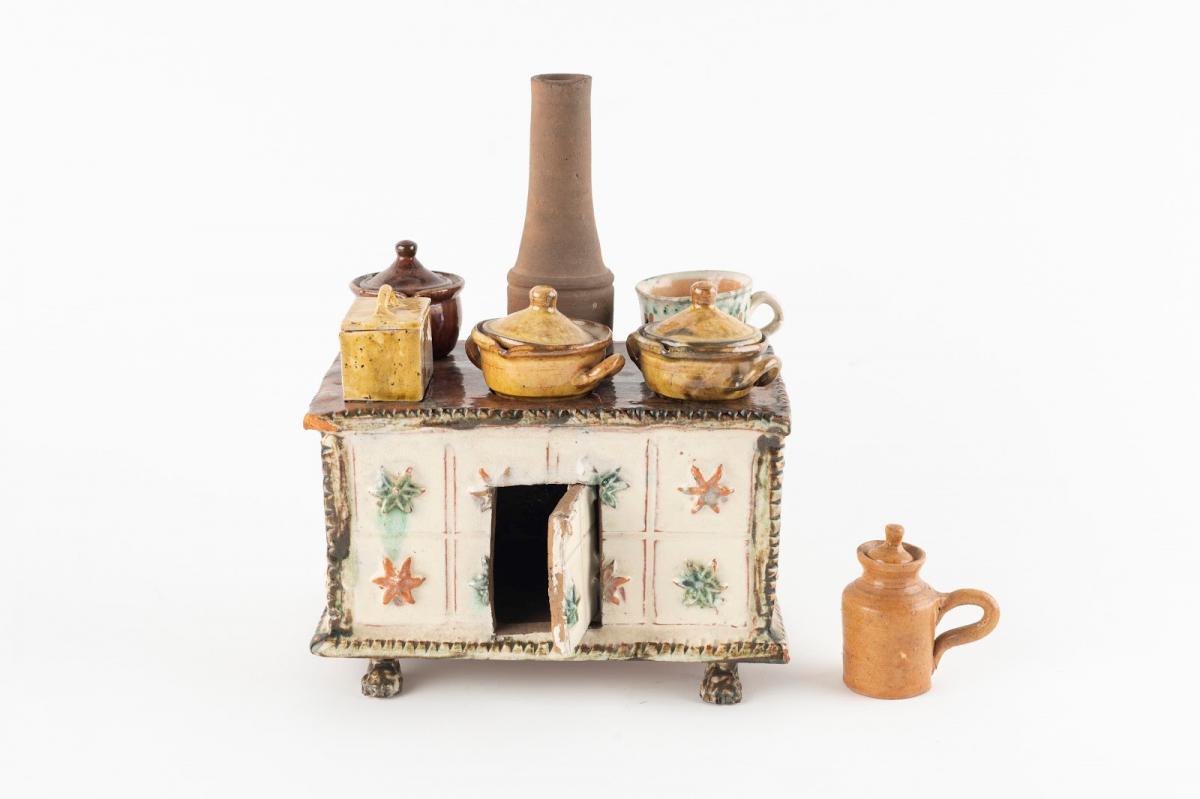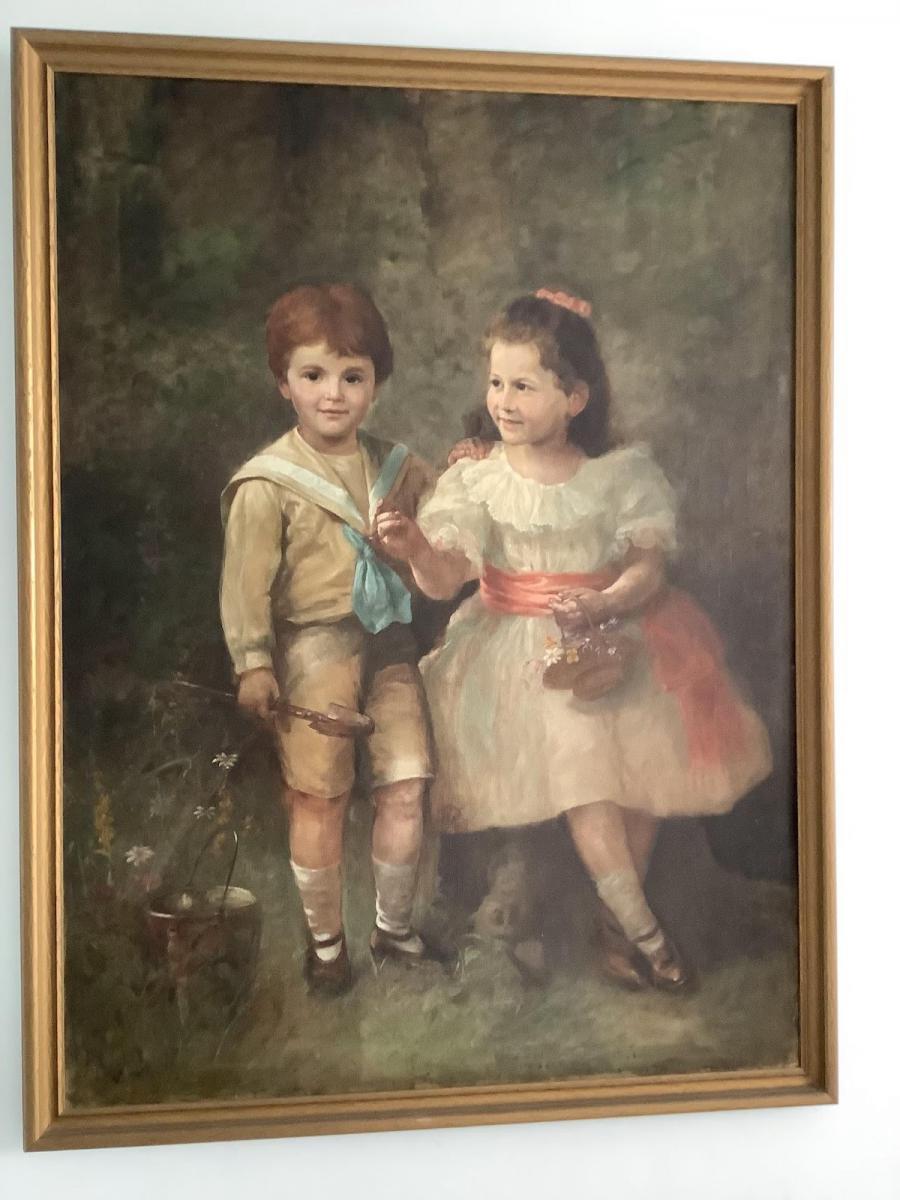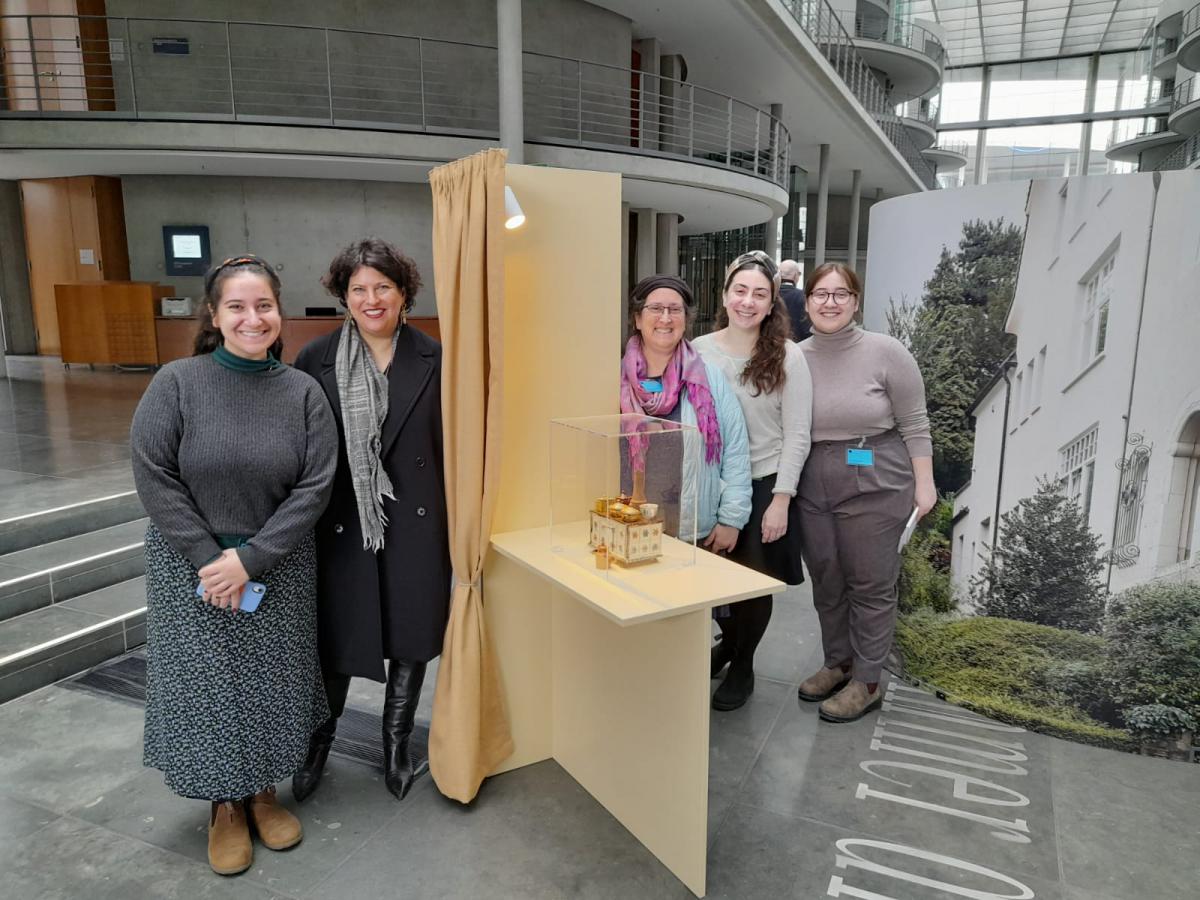







Last year, Orli Hartstein, originally from Columbus, Ohio, volunteered at Yad Vashem for a year of national service in the Art Department of Yad Vashem's Museums Division. There, she helped catalog art pieces and conducted research about artists whose works are among the thousands of creations in the Yad Vashem's unrivalled art collection. This job was both fulfilling and meaningful, as her family on both sides was deeply affected by the Holocaust.
Orli's paternal ancestors hailed from Galicia and Hungary, and her maternal side from German soil. "I grew up mainly hearing stories from my mother’s side of the family," explains Orli. "Most of my mother’s family was from Germany, specifically Mannheim and Stuttgart. The Neubauer/Bloch family, my maternal grandfather Otto’s family, were originally from Tachau, Bohemia (now the Czech Republic). Some of them came to live in Mannheim at the turn of the twentieth century. The Dreifus/Loewenstein family, my maternal grandmother Anneliese’s (Anne) family, lived in Stuttgart, after having lived in various parts of Germany for hundreds of years."
As a young adult, Max Neubauer (b.1873), Orli's great-grandfather, was sent to America to work at the Rich shoe store in Washington, DC, which belonged to his cousins. After living there for eight years, he eventually became a US citizen. He began to really enjoy his life there, but his family missed him, and invited him home to celebrate a family event. During his visit, he broke his leg, and after recovering, he consented to his parents’ plea not to return to the United States. At the turn of the century, a decision was made that he would marry his cousin, Agnes Bloch. They had two sons, Ernst (b. 1904), and Otto (b. 1907). As a German citizen, Max was drafted at the age of 43 to fight in World War I. Agnes died soon after Max returned from service in 1919.
Economic conditions in Germany were difficult, and Hitler soon began his rise to power promising to restore the motherland to its former glory. Otto, now 30 years old, was able to leave Germany for America in the late summer of 1938. After the November pogroms (Kristallnacht) in November 1938, the urgency to leave Germany intensified. In early 1939, while trying to obtain visas to come to the United States, Ernst, who had developmental disabilities, was not granted permission to emigrate and though Max was an American citizen, he would not leave Germany without his son. In late 1940, Max and Ernst, along with other family members, were transported to the Gurs detention camp in Vichy, France. Eventually, Ernst was deported to Auschwitz, where he was murdered. Max spent his remaining years at Gurs and several other camps until he died six months before the war ended.
During his imprisonment, Max wrote many letters to everyone, but mostly to his son Otto, who had settled in Columbus, Ohio, asking for money, food, and other necessities. Orli's aunt Carol Neubauer Friedman later found this correspondence between her father and her grandfather, and with the help of her mother, Anne, translated and compiled them to create The Correspondence of Maximilian Neubauer 1938-1945 – ensuring that their family history was preserved. Orli remembers reading this book at a young age, but, as she recalls:
"I never fully connected the dots until I began my service at Yad Vashem."
"Not only did I learn a lot about the Holocaust in general, but I was also able to use my special access to research new information about my family," continues Orli. "I looked up Max and Ernst and I was able to find them in the Yad Vashem database. I even discovered which bunk they were in in Gurs, and a Page of Testimony for his brother Ernst that my grandfather, Otto, had filled out in 1974 during his first visit to Israel."
As the cover page for the book of letters, Orli's mother chose to include a colored copy of the painting by Leo Breuer titled “Path Between the Barracks” (Gurs Camp, 1941). "She had viewed the painting on one of her first visits to Yad Vashem, and wanted to include it in the book in order to convey the terrible conditions my great-grandfather and great-uncle had to endure. It feels so surreal now, as I learn more about Holocaust art as a 'Bat Sherut ' (national service volunteer) to finally see the original painting with my own eyes."
This painting was one of the 100 artworks from Yad Vashem's Collection displayed at the German Historical Museum in Berlin in 2016.
Orli's grandmother's family story was different from her grandfather’s. The Dreifus and Löwenstein families were well established in the Stuttgart community. Her great-grandfather, Max Dreifus, was born in 1891 in Stuttgart and also served in the German army during World War I. In 1919, he married Else Loewenstein, who was born in 1893, also in Stuttgart. Max ran the family company called Dreifus & Lehmann, which manufactured men's clothing. They had two children, Anneliese, Orli's grandmother (b. 1920), and Helga (b. 1925). Sadly, Else died from complications after a surgery at the age of 36 in 1930.
In 1938, Max was arrested during Kristallnacht and sent to Dachau, a detention center at the time. Even though he had fought for Germany and had a prosperous business, Max realized his life in Germany was over. After his release from Dachau, he fortunately obtained visas for himself and his daughters to immigrate to America. They left from Rotterdam in April 1939 on the SS Noordam, eventually arriving in Chicago, where their relatives lived. In the six months between his arrest and their departure, Max arranged for possessions from their house to be sent to America. Included in their lift were many pieces of artwork. One of them is a large portrait of my grandmother’s mother and uncle as children and the other is of a tranquil Stuttgart landscape.
"For all of my childhood, these artworks hung in my house in Ohio, until my family moved to Israel in 2020," explains Orli. "It is through these family artifacts and my position in the Art Department at Yad Vashem that I have a tangible connection to my family’s history. The paintings traveled from Germany, to America, and now have a home in Israel. I never felt the depth of these paintings until I started my service at Yad Vashem. There are other members of my grandparents’ families that did not survive the Holocaust that I will never know, but being able to carry on their legacy by working at Yad Vashem means the world to me. This was such a special position because I learned something new every day, and I developed such a strong connection to the Holocaust.
"I feel like I am their voice, and that I can bring honor to how much suffering my family had to go through for me to be able to accomplish my dream of living in Israel. For me, this is not just a service for my country, but also a service for my family and for myself."
In the spring of 2022, during Orli's service at Yad Vashem, her mother donated a miniature ceramic stove to the World Holocaust Remembrance Center that her own mother, Anneliese Dreifus, had played with as a child in Stuttgart. It had been carefully preserved for many decades in Orli's grandparents’ home, but her mother felt it would be best to place it in the hands of Yad Vashem to be preserved forever. That stove is currently pride of place in "16 Objects," an exhibition of Yad Vashem artifacts that opened in the Bundestag to mark this year's International Holocaust Remembrance Day.
Needing an item to represent the state of Baden-Württemberg, the curators chose the toy stove. Recently, Orli travelled to Berlin with her mother and two sisters to see the exhibit for themselves. "The exhibit was created so thoughtfully and beautifully," she recounted afterwards.
"Seeing my grandmother's toy stove back in Germany, put on display in their government building no less, was indescribable. With a family history in Germany for hundreds of years, being present and being honored back in Germany after all that happened meant the world to me."
They also traveled to Stuttgart, where her grandmother grew up. With the help of Yad Vashem, the city organized a full day for the family, starting with meeting the Mayor and Vice Mayor of Stuttgart, and then driving to her ancestral homes, where her family lived before they were forced to escape. They then journeyed to Mannheim, where her grandfather's family was from, and visited homes and cemeteries to pay respect to the generations of Jews that came before her. "The whole trip was so meaningful, and it was such an honor to represent my family's legacy in person," she continued.
"I never would have imagined that performing my national service at Yad Vashem would have led to all of this, but I am so grateful to all the amazing people I have met along the way who understand the importance of Jewish stories like ours."










